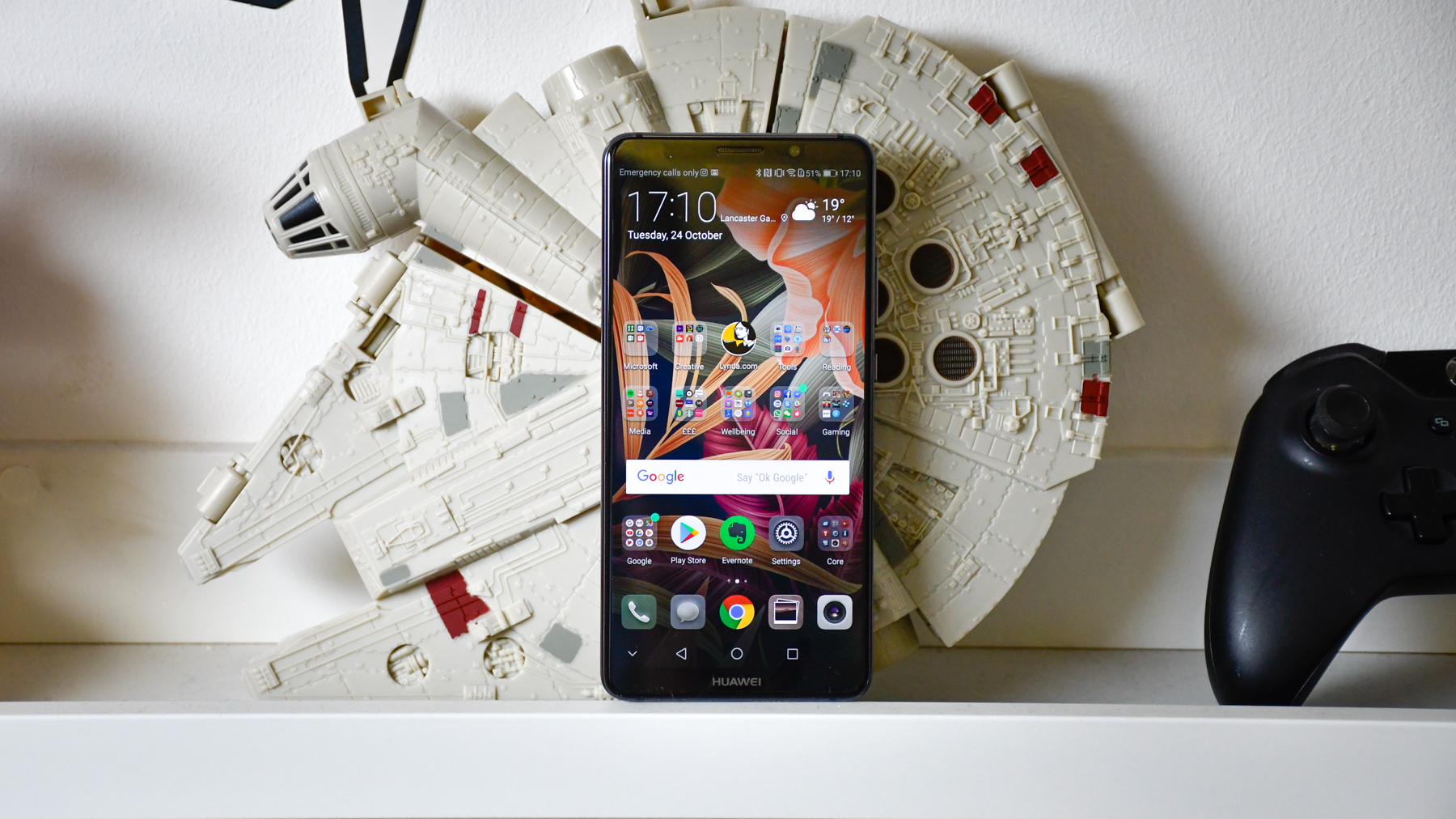TechRadar Verdict
Not only is the Huawei Mate 10 Pro the most impressive device we’ve seen from Huawei to date, it’s also one of the most impressive flagships currently on the market, undercutting the competition while offering more in some key areas.
Pros
- +
Excellent design
- +
Great enthusiast camera
- +
Class-leading battery
Cons
- -
No headphone jack
- -
No wireless charging
- -
EMUI not for everyone
Why you can trust TechRadar
Update: after Google suspended Huawei's future access to Android Play Store and security updates, there are serious question marks over the future of Huawei and Honor phones.
While Google and Huawei have promised to support phones currently on the market, it's not clear how long they'll receive Android updates or access to the Google Play Store, which would severely curtail their usefulness compared to the competition.
The Huawei Mate 10 Pro has a lot going for it. In addition to a slick, premium design, the screen packs vibrant, OLED technology with an 18:9 aspect ratio - similar to that found on the Google Pixel 2 XL, OnePlus 6, Samsung Galaxy Note 8 and iPhone X.
Huawei’s Mate 10 Pro also has a dual camera set-up reminiscent of the excellent iPhone 8 Plus and Galaxy Note 8. It’s even loaded up with Android 8, the latest version of Google’s operating system, out of the box, meaning you get the operating system’s latest security features and UI highlights - such as picture-in-picture viewing.
When its specs are laid out alongside the rest of the flagship competition, the Huawei Mate 10 Pro is jostling for top spot.
For starters, it offers 128GB of storage, plus it has a beefier battery than the competition - a huge 4,000mAh, compared with, 3,300mAh in the Samsung Galaxy Note 8 and under 2,691mAh in the iPhone 8 Plus.
The Mate 10 Pro even has an IR blaster for some added nostalgia-factor, meaning it can double up as a TV remote control for those times you’re trying to spook your mates in the pub, or simply can’t find your own.
Sign up for breaking news, reviews, opinion, top tech deals, and more.
Even on paper though, this phone isn’t perfect. The screen isn't the sharpest at 1,080 x 2,160, putting it below the crystal clear 2K and even 4K displays on competing smartphones like the Sony Xperia XZ Premium.
It also has no headphone jack, or microSD card slot - so you’ll need to use a dongle for your wired headphones and guarantee the ample internal storage is enough to last you the entire life-cycle of the phone.
Update: The Huawei Mate 10 Pro has been superseded by the Huawei P20 and P20 Pro, but for those wanting long battery life and a now more affordable option, the Mate 10 Pro still has a lot to offer.

Huawei Mate 10 Pro price and release date
The Huawei Mate 10 Pro launch price was £699 ($799, AU$1,099) which saw it slide it below some of its key competitors, but that price has dropped and the Mate 10 Pro can now picked up for less.
In fact, the SIM-free Huawei Mate 10 Pro price has dropped to as low as £499 ($660, around AU$880), put it more in contention with the likes of the OnePlus 6.
While the Huawei Mate 10 Pro went on sale towards the end of 2017 in the UK, Europe and other regions, it wasn't until February 2018 that the Mate 10 Pro made an appearance in the US.
What’s in the ‘Pro’?
- An OLED screen
- An f/1.6 dual-lens camera
- Lots of storage but no microSD slot or headphone port
The Huawei Mate 10 Pro has launched alongside the Huawei Mate 10, which, is very similar on paper to the Huawei Mate 9.
The main differences between the Mate 10 Pro and Mate 10 as a result, are also the main differences between the Mate 10 Pro and the Mate 9.
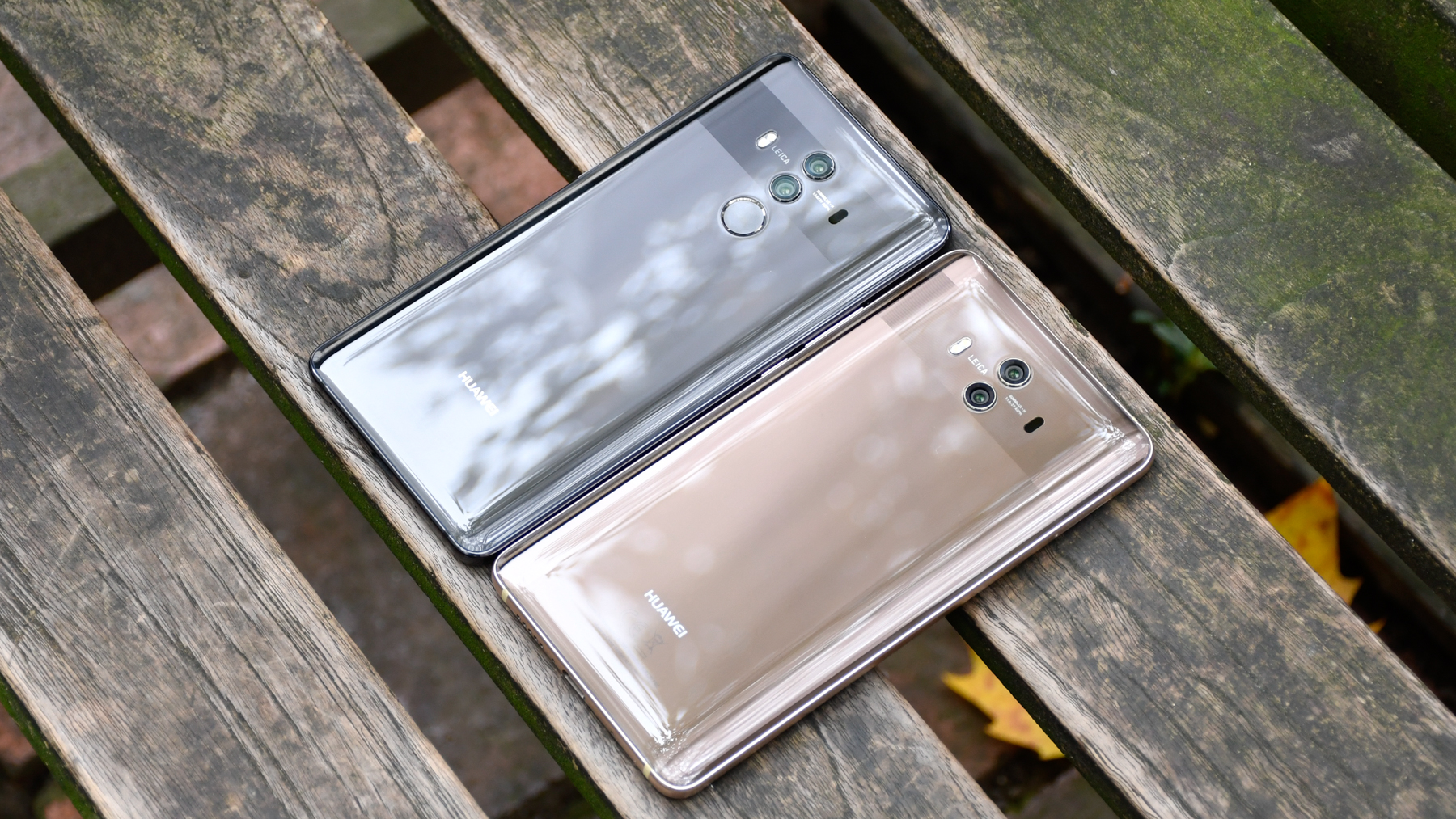
For starters, Huawei has ditched IPS LCD screen technology for the Pro, instead opting for an OLED display - and it was absolutely the right call. This thing pops beautifully.
Also ditched is the headphone jack and the microSD card slot - though there is double the storage in the model currently confirmed for release, at 128GB.
The Mate 10 and Mate 10 Pro do share some key commonalities not found in the Mate 9 however. They both adopt glass backs for example, feeling instantly richer than the blasted metal of old. In addition, they sport the newest version of Android, complete with the newest version of Emotion UI, Huawei’s custom interface.
EMUI 8.0 as it’s also known enhances these two phones in a number of very tangible ways, the most notable being the PC experience generated when hooking them up to a monitor or TV using an HDMI cable.
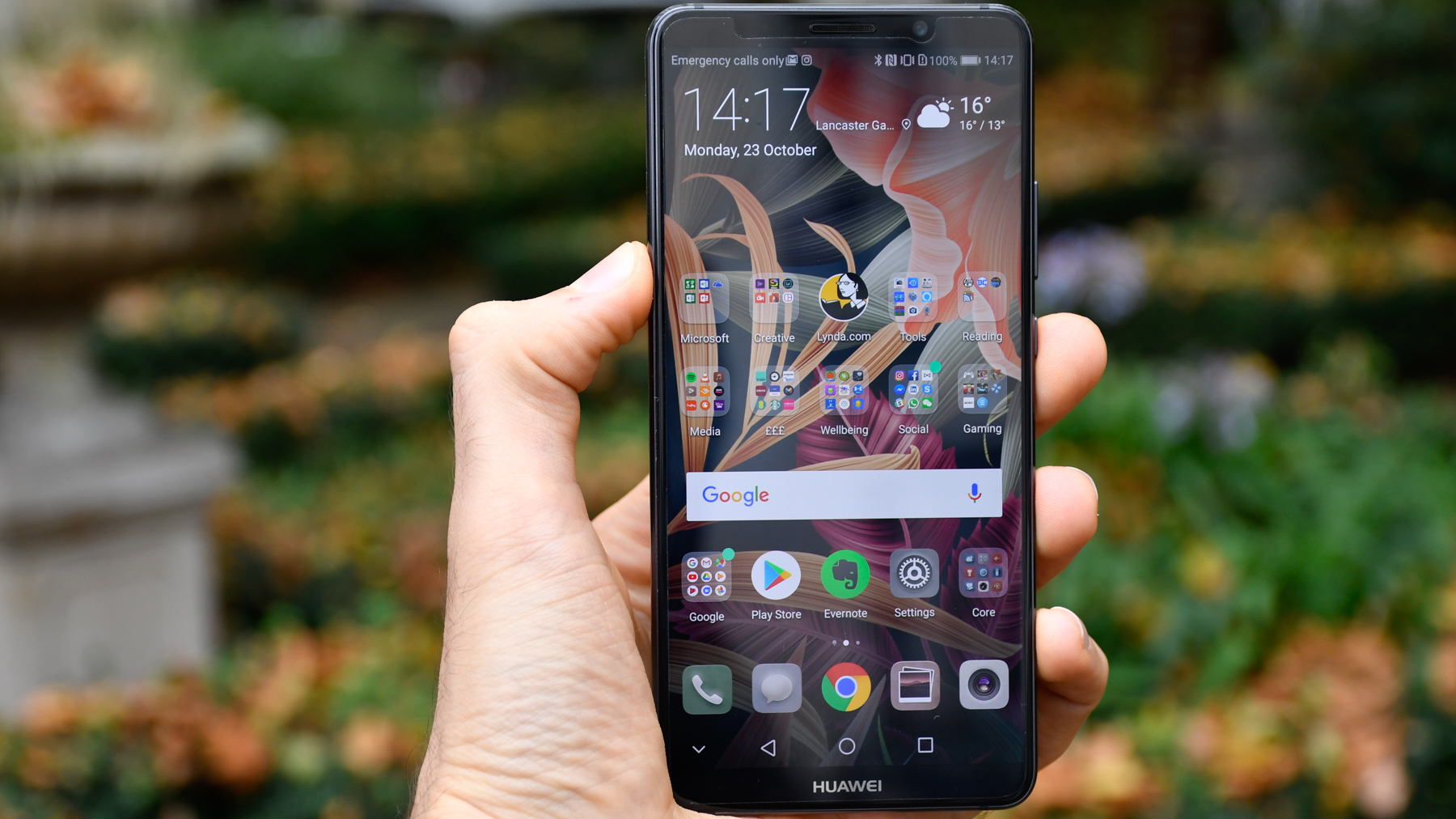
The camera set-ups on the new Mates are similar to what we’ve seen on the Huawei Mate 9, P10 and P10 Plus, in so far as they offer dual-cameras, combining an RGB and a monochrome sensor. This time round though, Huawei has stepped things up in the aperture department, with f/1.6 lenses across each of the camera modules.
This should result in better low-light photographs, hitting home Huawei’s camera partnership with Leica.
Design and display
- The best looking Mate yet
- Sleek mix of metal and glass
- Punchy screen but rivals are sharper
Thanks to a couple of generations of manufacturing very good looking glass-backed phones under the Honor name, Huawei knows exactly what it’s doing with the Mate 10 and Mate 10 Pro.
A curved Gorilla Glass back panel combines with a metal frame to create a phone that looks sleek, feels rich and doesn’t disappoint alongside other phones in the same price-bracket.
Huawei Mate 10 Pro hands on gallery
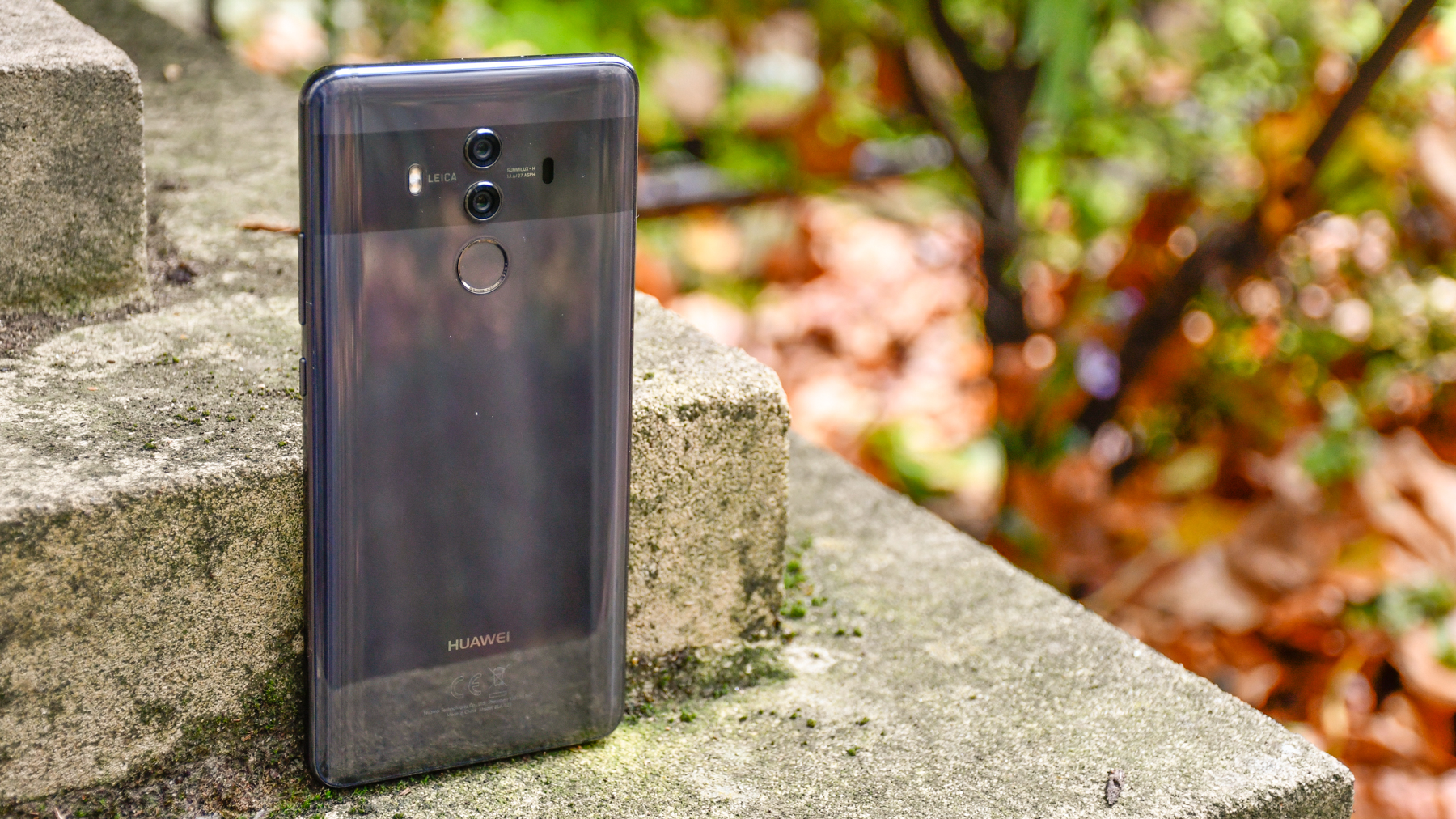
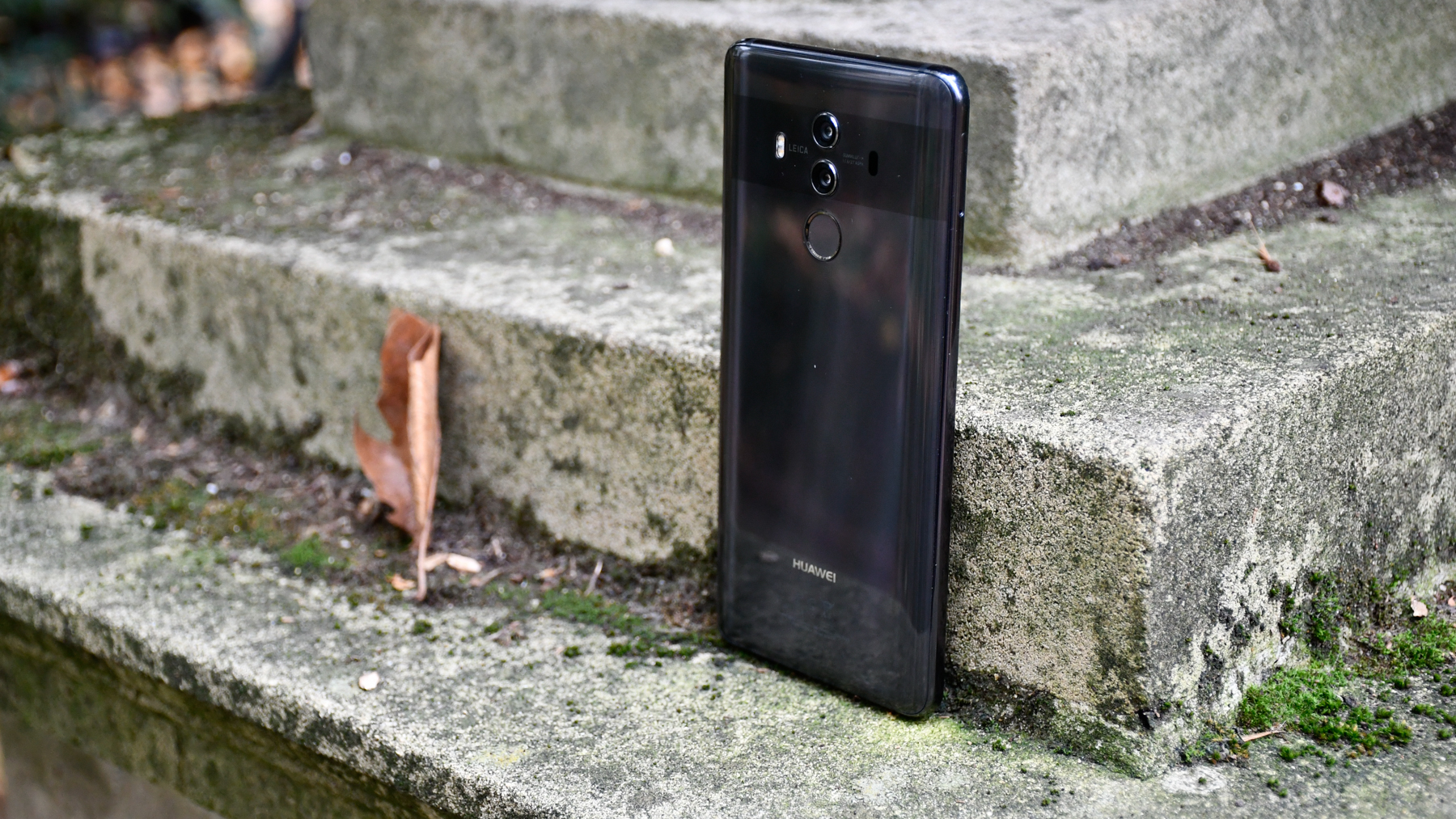
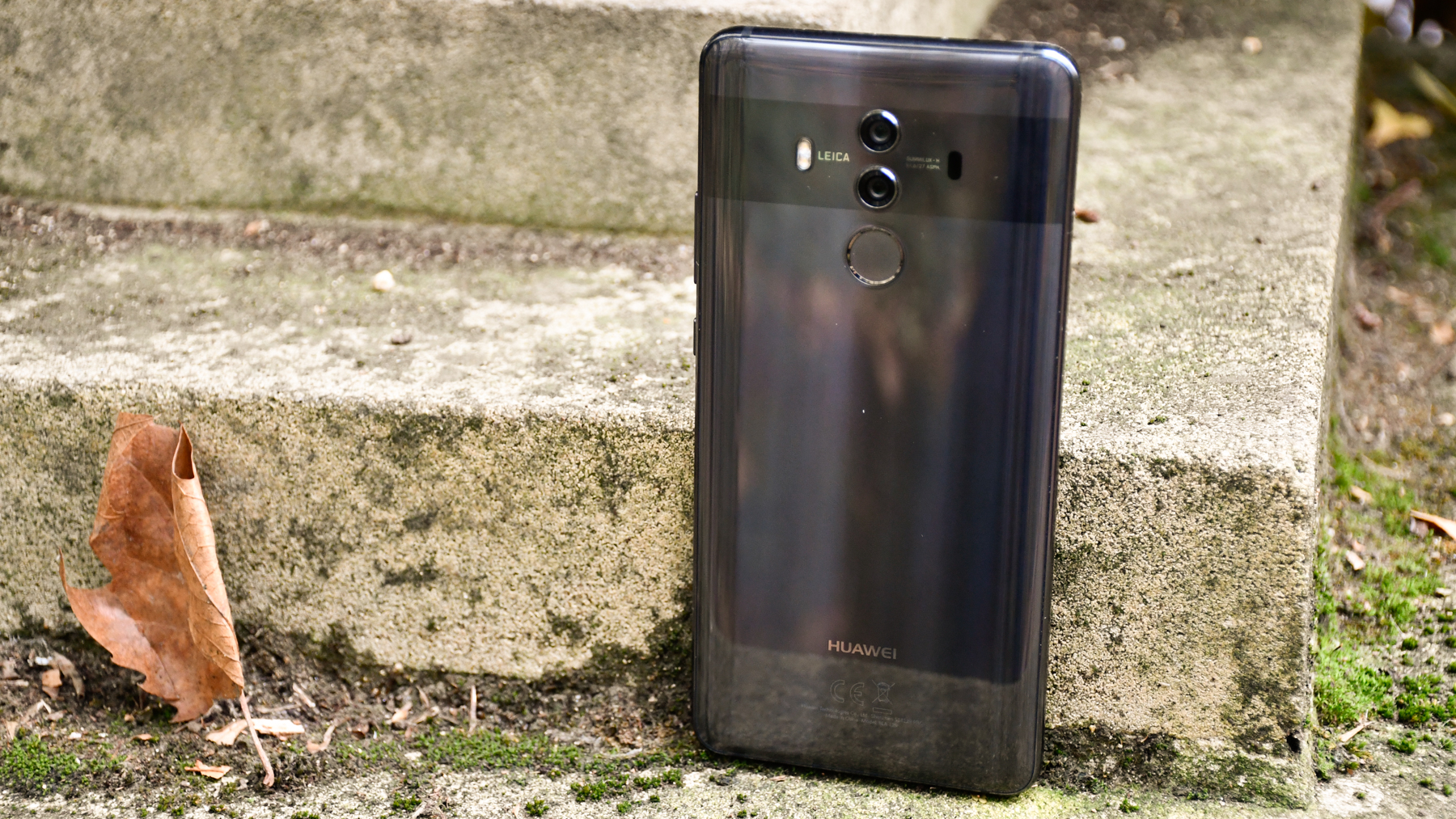

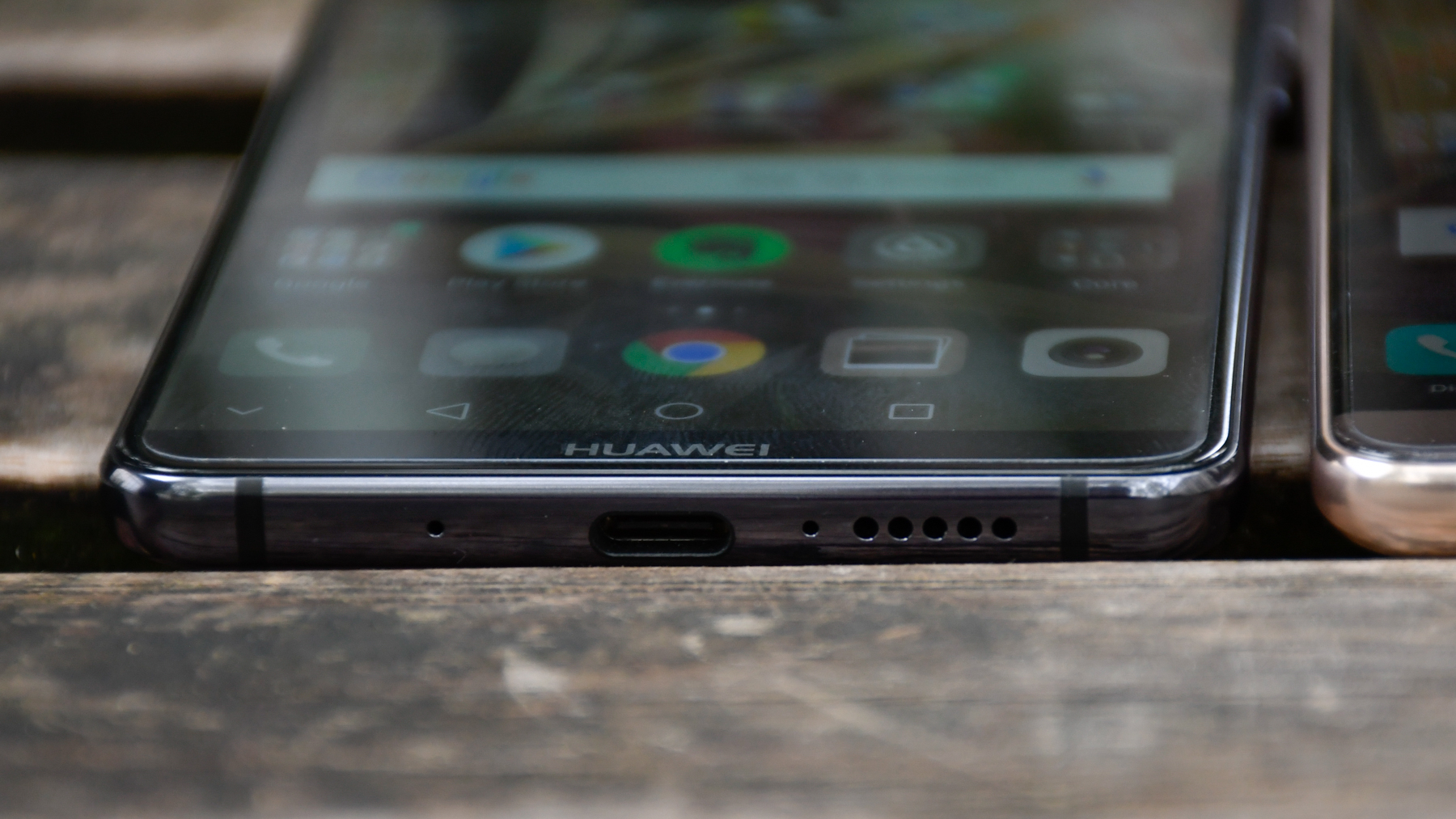
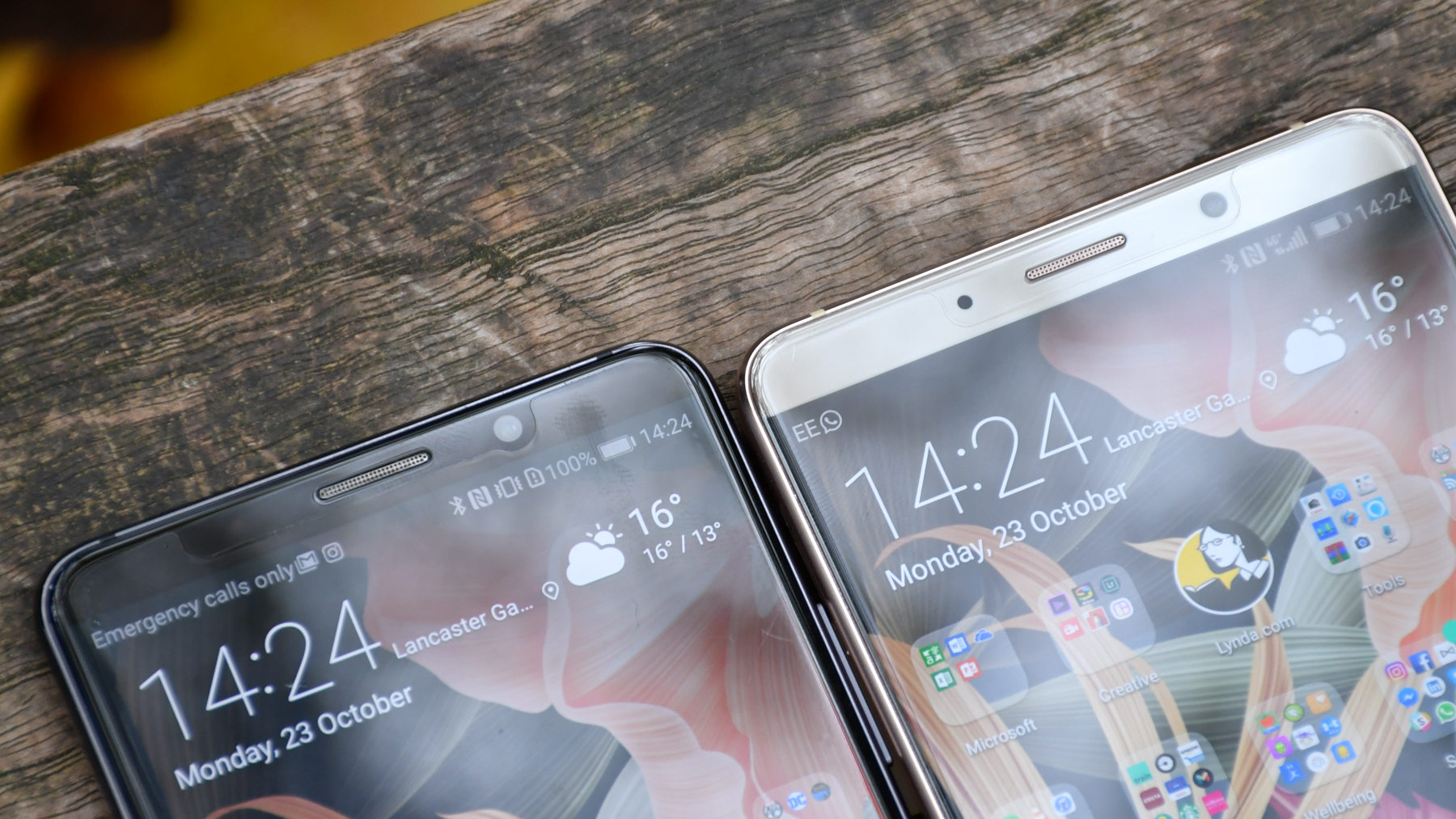

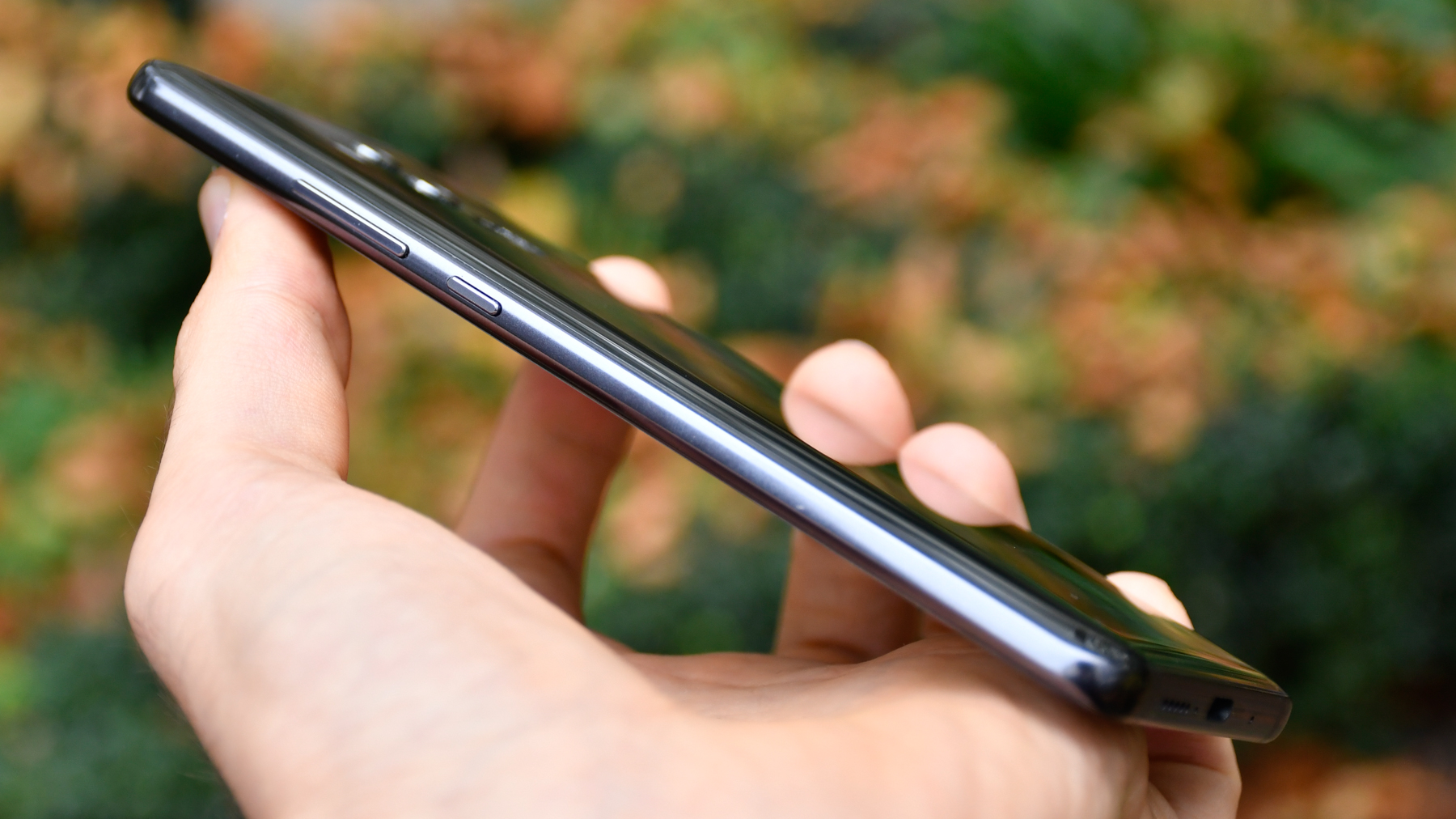


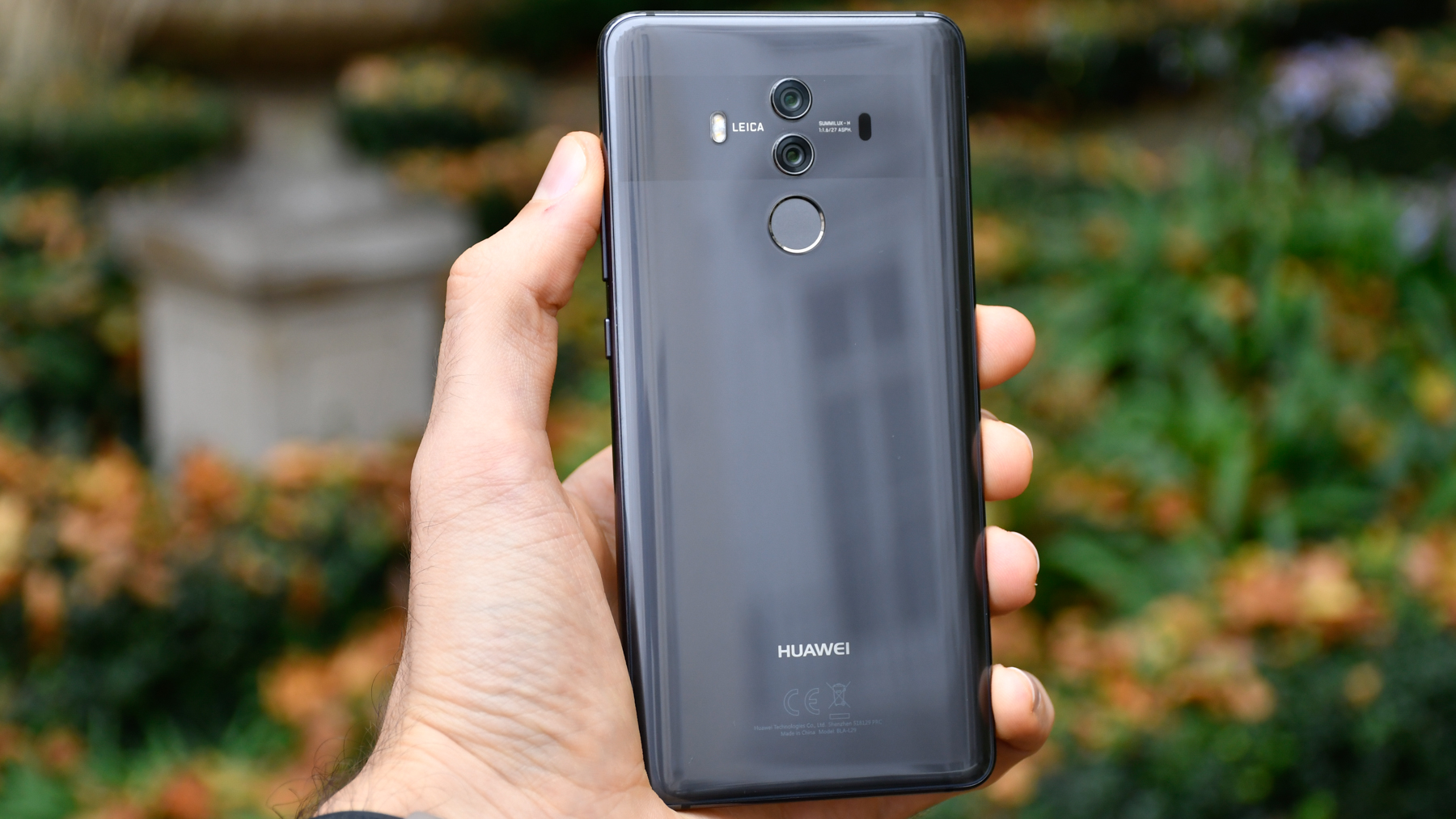
The front of the phone is seriously screen-heavy, offering a 6-inch display experience while maintaining a smaller footprint than the 5.5-inch iPhone 8 Plus.
Its 80.9% screen-to-bezel ratio also impresses compared to the classical iPhone 8 and 8 Plus design, though isn’t quite as light on bezels as the iPhone X. Like the iPhone X, Samsung Galaxy Note 8 and LG V30 though, the screen’s aspect ratio is ultra-wide with an 18:9 aspect ratio.
OLED technology with some added HDR10 support combine to gives the Mate 10 Pro’s display ample punch and pop - more than the comparatively muted Google Pixel 2 XL.
At full HD resolution though, it doesn’t have the clarity to compete with the likes of the Sony Xperia XZ Premium, Galaxy Note 8 and S8 series, nor is it quite as breathtaking with regards to color reproduction as the latter two.
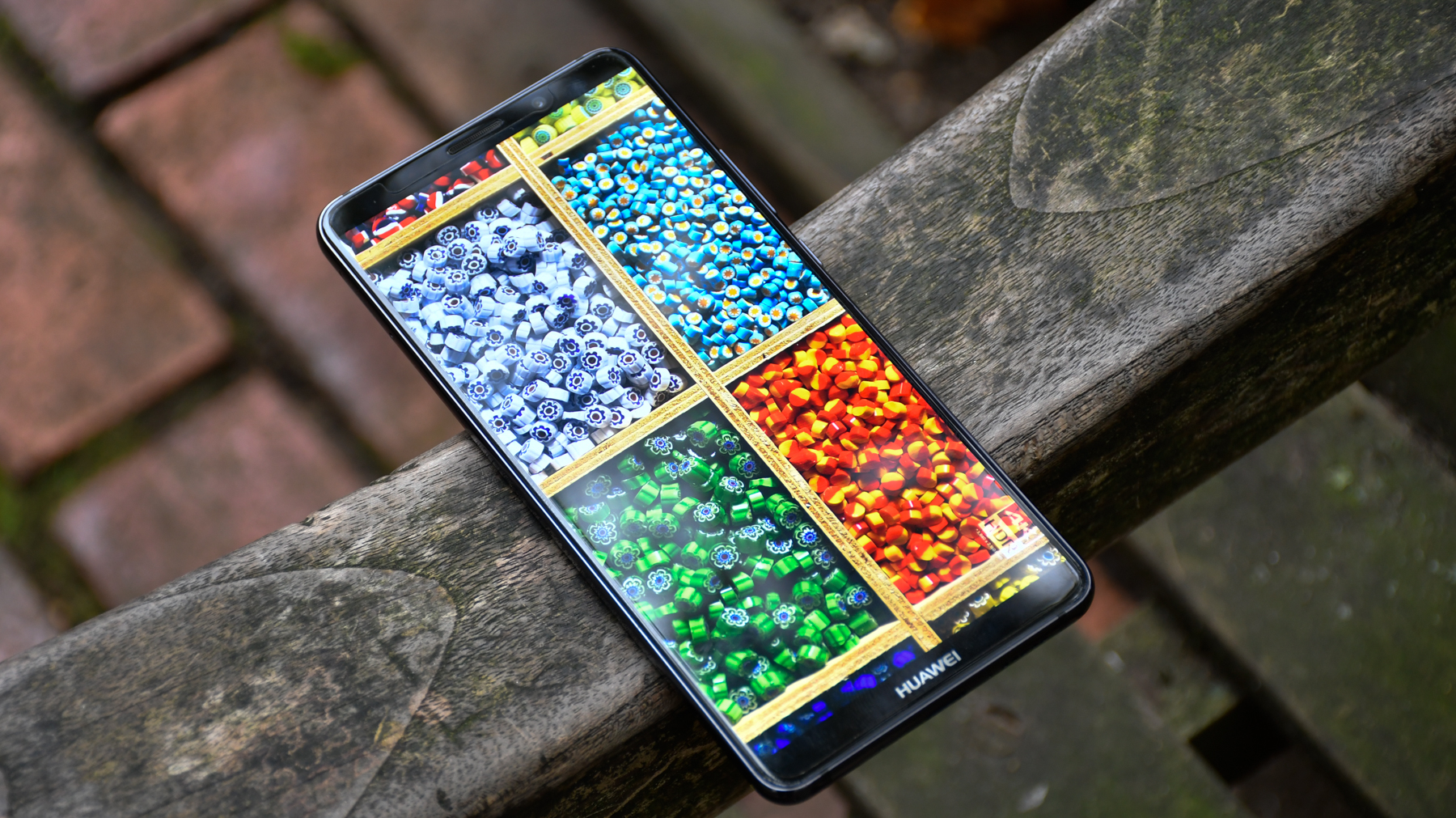
Despite this though, it still fares better than the Google Pixel 2 and LG V30 when it comes to color integrity and viewing angles, positioning it firmly in the middle of the premium smartphone screen hierarchy.
Loaded up with a screen-protector pre-fitted, as well as a soft plastic case in the box, it’s also reassuring that you won’t have to make any additional investments to keep your pricey new smartphone protected from all sides.
Even without a case and screen protector though, the Mate 10 Pro is a sturdy contender thanks to Gorilla Glass 5 on both sides and IP67 water and dust resistance.
The glass back has a slight curve across both axis, softening the feel somewhat. It also seamlessly transitions into the high-gloss metal sides and produces a sufficiently easy to grip shape and texture combination.
Less slippery than blasted metal it may be, but thanks to all the glass, the Huawei Mate 10 Pro’s design is also much more fingerprint-friendly.
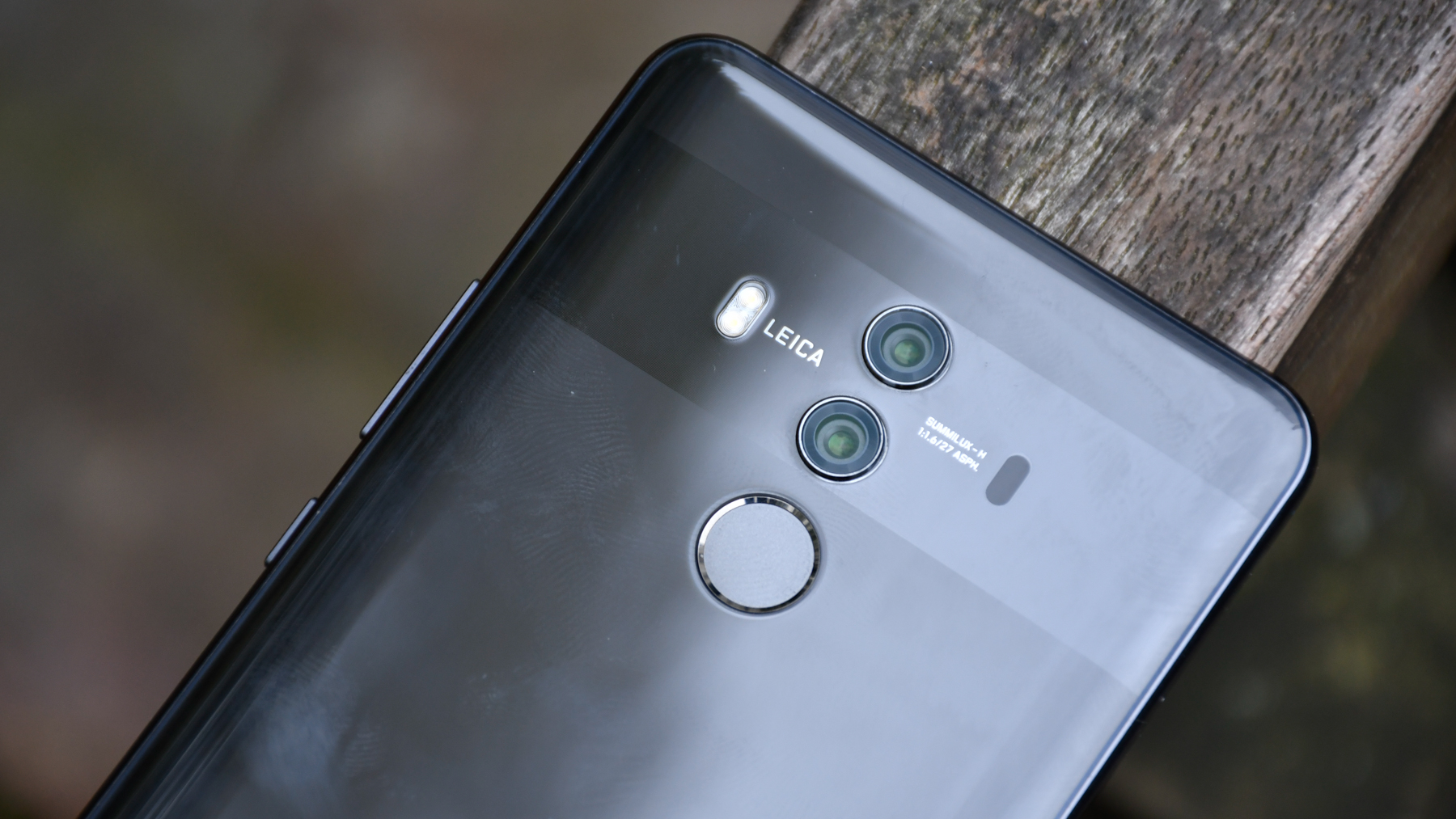
The dual-camera results in two mini camera bumps, while the fingerprint scanner has a nicely tactile recess to ensure a quick finger fumble will naturally find it.
While camera bumps aren’t ideal, as with the Google Pixel 2, the fact the cameras are physically independent discs of glass means that a smashed back won’t necessarily mean a smashed camera.
Easy to press buttons adorn the phone’s right-side, a USB-C port is at its base while the SIM tray sits on the left-side. This means that with no real complaints when it comes to the design and screen, save for the slightly irksome camera bumps, things have gotten off to an excellent start.
Add to that availability in four colors, Mocha Brown, Midnight Blue, Titanium Gray and Pink Gold, and there should be something for everyone in the Mate 10 Pro color portfolio - even if their communications strategy around the colors could do with some refining.

Basil Kronfli is the Head of content at Make Honey and freelance technology journalist. He is an experienced writer and producer and is skilled in video production, and runs the technology YouTube channel TechEdit.
